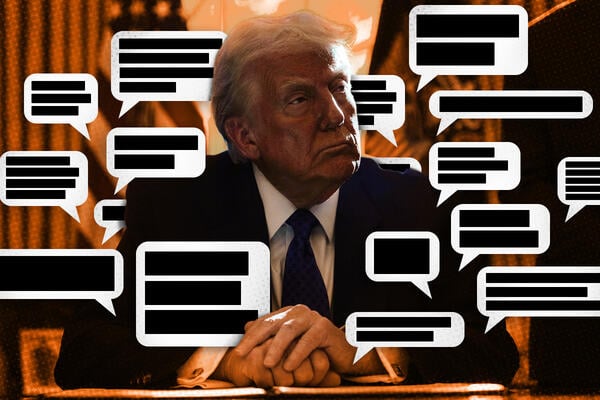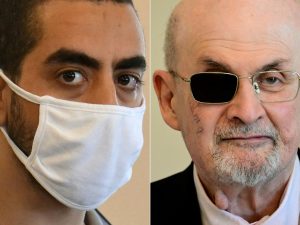In his first month, President Donald Trump has upended federal research funding and taken aim at race-conscious programs amid a flurry of executive orders and other actions.
While some higher ed associations and universities have responded with lawsuits, college presidents, for the most part, have watched in relative silence. Some have released statements on changes to their institutions’ federal funding or diversity, equity and inclusion initiatives, but those announcements have mostly been vague, with little mention of the political forces driving the changes. Few college leaders have publicly criticized the president’s efforts to overhaul the sector to match his vision.
The muted or mostly nonexistent response comes as campuses have increasingly grappled with how to navigate political events since last spring’s pro-Palestinian protests, when students demanded their leaders speak up about the war between Israel and Hamas. That seems to have quelled interest in taking institutional positions. Any pushback college leaders voiced during Trump’s first term has been largely replaced by silence.
The Presidents Speaking Up
Still, there have been some notable exceptions to the trend.
Michael Roth at Wesleyan University and Patricia McGuire at Trinity Washington University—two notoriously outspoken presidents—are among those who have voiced alarm about Trump’s attacks on the sector.
Roth has written op-eds calling on his fellow college presidents to “weigh in when they see the missions of their institutions” and the health of their campus communities “compromised.” He also shared his thoughts on speaking up at the American Council on Education conference last week, noting that he tries “not to speak about the president directly” but rather the need to stand up for institutional values when they are threatened by external forces, such as Trump.
McGuire remains an outspoken presence on social media and in interviews.
Other leaders have spoken forcefully to their constituents about Trump’s interference.
Following a recent and widely panned Dear Colleague letter that declared race-conscious programming, resources and financial aid illegal, Case Western Reserve University president Eric Kaler wrote in a message to campus that “this expansion to include all aspects of campus life appears to be a gross overreach of the Supreme Court decision and may be challenged in the legal system.” He added that the university “will remain firmly committed to our core values.”
Some presidents at minority-serving institutions have added their voices to the mix.
David Thomas, president of Morehouse College, a historically Black institution, told CNBC last month that Trump’s attempted freeze on federal funding represents an “existential threat.” He also called out an executive order targeting diversity, equity and inclusion, telling MSNBC that “we must be a point of resistance to that effort to essentially teach untruths.”
Thomas, who is retiring in June, suggested a second Jim Crow era was coming, which he called “a reaction to the progress of people of color and others who have been disenfranchised.”
Presidential Silence
But as most presidents have remained silent, some critics have blamed institutional neutrality, the concept that universities should refrain from making statements on social or political issues. The movement seemed to boom last year as pro-Palestinian protests spread nationally and students often called on presidents to make public statements.
Roth, speaking at ACE, cast institutional neutrality as “a vehicle for staying out of trouble.”
The American Association of University Professors has also taken a critical view of institutional neutrality, writing in a lengthy statement earlier this month that it “conceals more than it reveals.”
Joan Scott, professor emerita at the Institute for Advanced Study who was part of the AAUP group that crafted the statement on institutional neutrality, is also critical of presidential silence in the face of what she described as an attack by the Trump administration on higher education.
“I think there is no question that the target is the university mission as we’ve known it, and that very few people are speaking up,” Scott said. “And in fact, I would say that institutional neutrality is being used as a kind of protective stance for those administrators who are not speaking up.”
A frequent refrain from campus leaders who have adopted institutional neutrality is that they would speak up when the core institutional mission is threatened, which experts argue is happening. However, most presidents are not speaking up despite perceived threats to the core mission.
Inside Higher Ed contacted 10 universities with institutional neutrality policies, all among the wealthiest in the nation, with multibillion-dollar endowments. Only Yale University provided a statement, though some others shared prior messages from their presidents to the campus communities regarding the federal funding freeze and Trump attacks on DEI. Of those messages, none directly connected their concerns to the Trump administration or said what was driving federal actions.
“The university is working to understand the scope and implications of the recent [Dear Colleague] letter and remains committed to the mission, to the principles of free expression and academic excellence, and to supporting the community,” Yale spokesperson Karen Peart wrote by email. “President [Maurie] McInnis and Provost [Scott] Strobel sent a message to the Yale community that addresses recent developments from the federal government. President McInnis has also shared a message to the community about the university’s commitment to the research mission.”
Yale did not answer specific questions sent by Inside Higher Ed.
Scott believes presidents are conducting a balancing act—one she views as cowardly. She argues that many are more concerned about “short-term risks,” such as an increase to the endowment tax or the loss of federal funding, than “the long-term risk” that “higher education as we’ve known it disappears or is put on hold” through the remainder of Trump’s four-year term.
“What we’re watching is a struggle on the part of university administrators to balance some commitment to the mission—the attacked mission of the university—and some anxiety about the funding that keeps the mission going, even as the mission is being undermined,” Scott said.
Jeremy Young, director of state and higher education policy at PEN America, a free expression group, takes a more charitable view of college presidents remaining mum on Trump’s actions.
Speaking up is fraught with risks, Young argues, ranging from punitive actions by the Trump administration to pushback from trustees. Instead, he thinks leaders should organize a unified sector response.
“If you’re looking to individual presidents to face off against the power of the U.S. government, you’re looking in the wrong place,” Young said.
He believes associations are leading the fight and urges them to collaborate more, arguing that organizations need to stick together to flex collective strength. That’s the only way “higher ed will be strong enough to be able to respond effectively,” he said.
But just because presidents aren’t speaking up doesn’t mean they have to cower, he said.
“I think the one thing that’s easy is that presidents shouldn’t overinterpret the law,” Young emphasized. “They shouldn’t comply in advance. You look at the Dear Colleague letter—it’s very clear in the letter that it does not have the force of law. There is an attempt here to scare presidents, and they should avoid being scared into doing things that aren’t required.”
He stressed the importance of maintaining normalcy and core values on campus. One area where college presidents could improve is on their internal messaging, he said. As political pressures mount on higher ed, it’s vital that administrators communicate with constituents “to reassure them that they have their backs.”








